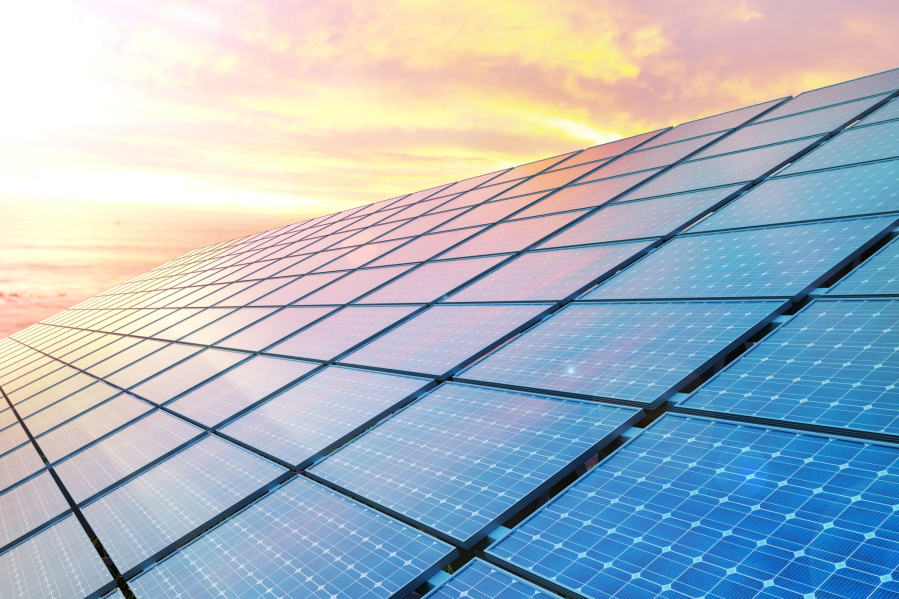It’s hard to ignore the impact of climate change on agriculture in the Columbia River Basin.
Wildfires scar rangeland and farmers struggle to irrigate crops as rising temperatures and extreme weather pose new obstacles for the industry, especially in Washington counties east of the Cascade Range.
Among farmers, however, the most talked about threat to their livelihoods isn’t the impact of climate change.
Instead, it’s the impact of expanding renewable energy infrastructure across Washington’s farmland.
Washington has set aggressive targets to decarbonize the state’s energy profile. These targets will require state utilities to produce and purchase all energy from renewable or net zero sources by 2045.
In line with these goals, rural counties like Klickitat and Yakima counties boast strong renewable energy goals of their own.
With abundant land resources, these less-populated counties have capitalized on the push for renewables by rapidly expanding wind and particularly solar infrastructure.
Many private solar companies seek out farmland for utility-scale solar projects, brokering solar-lease covenants with private land owners that will last for decades.
However, Mark Herke, president of the Yakima County arm of the Washington Farm Bureau, has for years spoken out against large-scale renewable energy infrastructure.
In fact, the Yakima County Farm Bureau refuses to even call the infrastructure “solar farms.”
“We dropped that term a long time ago,” Herke told Capital Press. “We call them solar-industrial complexes.”
Herke says he isn’t anti-solar energy. But at a February solar moratorium hearing in Klickitat County he laid out the mounting conflict between farmers and the push to convert agricultural land to renewable energy facilities.
“We need food, too, and we need farmland,” he said. “I’m all for the wind, but the solar thing is a completely different breed of cats, and it needs a completely different set of regulations.”
Across rural parts of the state, county commissions that were once all-in on solar are enacting solar moratoriums in response to strong public opposition to the siting of these facilities from farmers and rural residents.
In response to these moratoriums, solar companies looking to develop large tracts of land in places like Yakima and Klickitat counties have bypassed local governments and approached Washington state’s Energy Facility Siting Evaluation Council to get higher approval to move forward with their projects.
The tactic may be strategic, and legal, but it’s also alienated many residents of rural counties who already feel their ability to govern their own property is compromised by larger political powers in more populous parts of the state.
Some wonder if a just transition from farmland to decarbonized energy sources in rural Washington is possible.
Impact on salmon
Within the Columbia River Basin’s food-production system, the impacts of renewable energy projects expand beyond agriculture.
The timeline for water availability will change in the Columbia River Basin over the coming decades, putting pressure on the water supply to simultaneously: maintain adequate water levels to support fish populations, provide hydropower and meet agricultural needs.
Last year, the Columbia River Inter-Tribal Fishing Commission (CRITFC) released an Energy Vision for the Columbia River Basin detailing strategies to support affordable and decarbonized energy production while protecting local fish populations and cultural resources.
“Without proper integration and siting,” the plan reads, “renewable resources can make things worse for Columbia River salmon and other tribal resources.”
The CRITFC energy vision lists multiple places that would be ideal for the construction of utility-scale solar infrastructure, including retired agricultural properties.
The organization acknowledges that while farmland can be ideal for solar installations, planning should incorporate strategic siting and integration of emerging technologies such as dual-use solar to avoid taking prime farmland out of commission.
Lack of strategic siting of renewable energy facilities poses a threat to tribal cultural resources as well.
At the February Klickitat County solar moratorium hearing, Elaine Harvey, a Yakama Nation fisheries biologist, outlined the impacts of solar projects on tribal access to First Foods.
“I come here today to talk about first and foremost, our cultural resources, and how we’re connected to this land, and how I’ve already seen and witnessed the Lund Hill solar project impact our resources in Roosevelt.”



